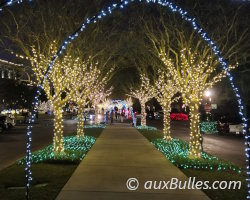Sealife guideThe sperm whalePhyseter macrocephalus
Last updated on 08/14/2024 at 07:24 PM
In the collective imagination, the sperm whale is associated with the novel Moby Dick written by Herman Melville and inspired by the great epics of sailors who sailed to the farthest reaches of the ocean, towards the Southern Ocean, to hunt whales.
Taxonomy
- Common name: Sperm whale
- French name: Grand cachalot, cachalot
- Scientific name: Physeter macrocephalus (Linnaeus, 1758)
- Family name: Physeteridae
- Order name: Cetacea
- Class name: Sea mammals [Mammalia]
Description
The sperm whale is a species of toothed cetacean, as evidenced by its imposing jaw.

The sperm whale (Physeter macrocephalus) © Martin Procházka | Dreamstime.com
The sperm whale is a mammal of superlatives, reaching lengths of up to 20 meters and weighing between 50 and 60 tons. The sperm whale has the largest brain in the world, with its head weighing approximately a third of its total weight.
Geographic range
The sperm whale frequents the deep waters of the high seas and travels to virtually every ocean and sea around the globe to feed and reproduce. Males venture into the cold waters of the Antarctic and Arctic oceans, particularly the waters around the Crozet Archipelago, to feed, while females prefer to stay in warmer waters with their offspring. Males and females usually meet in the Azores.
In France, sperm whales are found in the Atlantic Ocean, in the Bay of Biscay, and in the Mediterranean Sea, mainly off the Côte d'Azur and Corsica.
Habitat
The sperm whale lives in groups called pods, but each one lives separately, with males on one side and females with their young on the other. They communicate with each other by emitting powerful clicking sounds that can be heard from several kilometers away.
Diet
The sperm whale is a formidable predator, and certainly the largest toothed predator. This mammal feeds mainly on large or giant squid, octopus and cuttlefish, but also on fish of all kinds, depending on what it encounters.
The sperm whale's only predator is the killer whale, which can attack the youngest sperm whales.
Reproduction
Female sperm whales give birth every three to six years, and look after their offspring for more than a decade. The females live with their offspring separately from the males, and help each other to protect and nurse the young sperm whales.
Did you know ?
The sperm whale is an excellent apneist, capable of diving rapidly to a depth of 3,000 meters and staying there for up to 1 hour and 30 minutes.

The sperm whale (Physeter macrocephalus) © Martin Procházka | Dreamstime.com
The sperm whale sleep is a real spectacle, where you can admire a whole group of sperm whales installed in an upright position with their heads facing downwards or upwards to sleep.
Sperm whale populations have fallen victim to commercial whaling, with the spermaceti contained in its head used as a lubricant and the ambergris extracted from its intestines used in perfumery. It is now on the IUCN endangered species list with the status of « Vulnerable ».
Bibliography
Discover also

Amazon river dolphin
(Inia geoffrensis)
(Inia geoffrensis)

Australian sea lion
(Neophoca cinerea)
(Neophoca cinerea)

Common bottlenose dolphin
(Tursiops truncatus)
(Tursiops truncatus)

Dwarf minke whale
(Balaenoptera acutorostrata)
(Balaenoptera acutorostrata)

Florida manatee
(Trichechus manatus latirostris)
(Trichechus manatus latirostris)

Rissos dolphin
(Grampus griseus)
(Grampus griseus)

Short-beaked common dolphin
(Delphinus delphis)
(Delphinus delphis)

Spinner dolphin
(Stenella longirostris)
(Stenella longirostris)
Our latestUpdates

Friday, January 10th 2025
Hvar island
Hvar, a jewel of the Adriatic, captivates with its turquoise waters, wild coves and fragrant lavender fields. Between medieval villages, lively ports, and lush hills, Hvar island offers the perfect mix of relaxation, culture and breathtaking landscapes. Ideal for sun, sea and authentic experiences.

Thursday, January 9th 2025
The lemonpeel angelfish
The lemonpeel angelfish is a small, brightly colored reef fish found in the tropical waters of the Indo-Pacific ocean. It inhabits shallow coral reefs, sheltering among corals and rocky crevices.

Friday, December 19th 2025
The magic of Christmas decorations
Discover Christmas decorations in Florida: giant trees, illuminated palm trees, magical light displays and tropical settings to experience the holiday magic under the sun.
Photo of the Day

Poisson perroquet princesse
(Scarus taeniopterus)
(Scarus taeniopterus)





